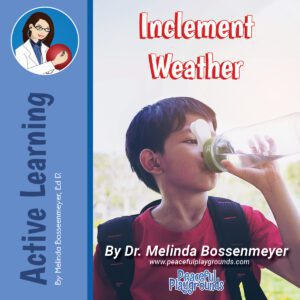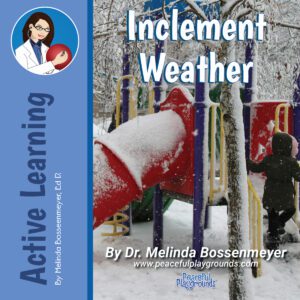Inclement Weather
Resources for Rainy Days, Snow Days and Hot Weather Tips and Resources

How a New CA Law Will Shield Student Athletes From Heat
CPSC Fact Sheet
A change in California law authored by an Inland Empire lawmaker requires extra monitoring of young athletes on the hottest days and sets strict guidelines for how and when they can play in extreme heat. The rules will affect high school athletics throughout the state and expand safety practices that schools in the desert have observed for years, said Estevan Valencia, athletic director at Palm Desert High.

California's New Bill- Emergency Action Plans Heat Illness Guidelines
This bill would require the written emergency action plan to also include the location and procedures to be followed in the event of heat illness related to the athletic program activities or events, as provided. The bill would also require the California Interscholastic Federation, in consultation with the State Department of Education, to, no later than July 1, 2024, develop guidelines, procedures, and safety standards for the prevention and management of exertional heat illness, as provided.

California's Extreme Heat Action Plan Signed by Newsom
Govn Newsom's 2022 Extreme Heat Action Plan, is funded by $52.3 billion in the California Climate Commitment budget.

UCLA Luskin Center for Innovation
Extreme heat is a growing problem for California's schools. Lack of air conditioning leaves classrooms too hot to maximize learning, while lack of shade puts students at risk in schoolyards. The problems and solutions are more complex than one might think — tradeoffs abound (for example, between cooling classrooms and reducing greenhouse gas emissions), and the tension between state and local responsibility and control is palpable.
UCLA Luskin Center for Innovation- Hot School Yards and Classrooms

A Brief History of CA School Facility Program
The Leroy F. Greene School Facilities Act of 1998 (Senate Bill 50) was chaptered into law on August 27, 1998, establishing the SFP. The SFP provides for a wide variety of state funding, including, but not limited to, new construction, modernization, charter school facilities, career technical education facilities, seismic mitigation, facility hardship, joint-use programs, high-performance attributes, and assisting in the relief of overcrowding.

Artificial Tuff Gets a Second Look & Possible Removal Vote
"Emerging research is making it clear that artificial turf poses an environmental threat due to its lack of recyclability and presence of toxins such as lead and PFAS," said state Sen. Ben Allen, the Redondo Beach Democrat who authored the bill. With the new law "local governments will again be able to regulate artificial turf in a way to both protect our environment in the face of drought and climate change but also by preventing further contribution to our recycling challenges and toxic runoff," he said.

Burn Safety Awareness On the Playground
CPSC Fact Sheet
The U.S. Consumer Product Safety Commission CPSC wants you to be aware of the risk of thermal burns from playground equipment. You may remember the metal slides of your youth and how they could get very hot in the summer sun. But what you may not realize is that today's newer materials, such as plastics and rubbers, also have the potential to become hot enough to burn a child's skin.


LAUSD Heat Advisory
LAUSD
Heat stress is the overall effect of excessive heat on the human body. Prolonged exposure to high air temperatures or too high humidity at even more moderate temperatures may cause the body temperatures of people of all ages to rise and produce one or more of the signs of heat stress affecting the ability to learn, work, or even play.
Those at highest risk are the very young, the elderly, people with acute or chronic health problems, and people using certain medication or taking illicit drugs. For various reasons, not all people tolerate heat to the same extent.

CDC Advisory Heat
Center for Disease Control
Photo of young boy with heat exhaustion.People suffer heat-related illness when the body's temperature control system is overloaded. The body normally cools itself by sweating. But under some conditions, sweating just isn't enough. In such cases, a person's body temperature rises rapidly. Very high body temperatures may damage the brain or other vital organs. Several factors affect the body's ability to cool itself during extremely hot weather. When the humidity is high, sweat will not evaporate as quickly, preventing the body from releasing heat quickly. Other conditions that can limit the ability to regulate temperature include old age, youth (age 0-4), obesity, fever, dehydration, heart disease, mental illness, poor circulation, sunburn, and prescription drug use and alcohol use.

Keeping Kids Cool at School
Melinda Bossenmeyer, Ed.D.
As most of the nation heads back to school facing triple-digit heat, schools face the challenges associated with outdoor recess and overheated classrooms. Principals and physical educators will face daily decisions regarding children's heat health on the playground.
In this article, we will review some information regarding different playground challenges and solutions to those problems.
Article – Keeping Kids Cool at School. When is it too hot for recess?

Kyrene School District – Heat Index Guidelines And Procedures
Kyrene School District
The Kyrene School District is committed to protecting the health and safety of our students and staff. Kyrene provides various opportunities for outdoor physical activities before, during, and after school. These guidelines are meant to provide a decision-making structure to promote student and staff safety when local weather may be detrimental to their health.

